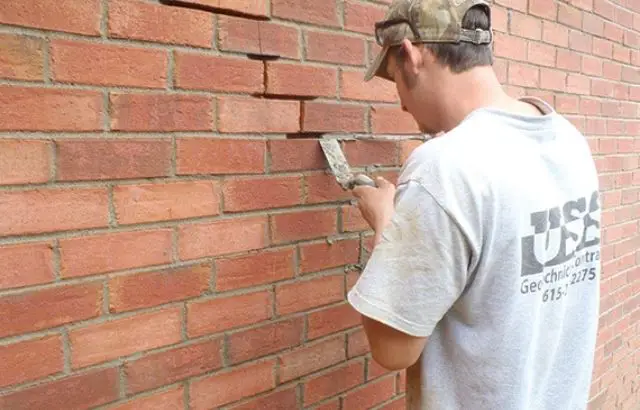This article focuses on educating us on how thick floor tiles are, the meaning of ceramic tiles, ceramic tile thickness in cm, tile thickness in cm, and lots more discussed in it.
Tiling is the most economical coating solution. It can be applied both to the wall and to the floor. Its durability varies depending on the type of tile. But the thickness of the tile also influences its strength and durability. Generally, the thickness corresponds to the dimension of the tile. A 60 × 60 tile thickness is often more significant than that of a 10 × 10 tile.
Understanding the Meaning of Ceramic Tiles
Ceramic is a material that is obtained from the mixing and firing at high temperatures of various substances, including clays, containing mixed oxides that create different colors: ceramics composed of a high percentage of iron oxides are characterized by shades of yellow, orange, red, or brown, while those containing more titanium oxides have light shades, from white to yellow.
In addition to clay, it is made up of feldspar, minerals from effusive and intrusive rocks, siliceous sand, aluminum oxides with good resistance to acids and low thermal conductivity, and quartz originate from intrusive igneous rocks and have a crystalline structure.
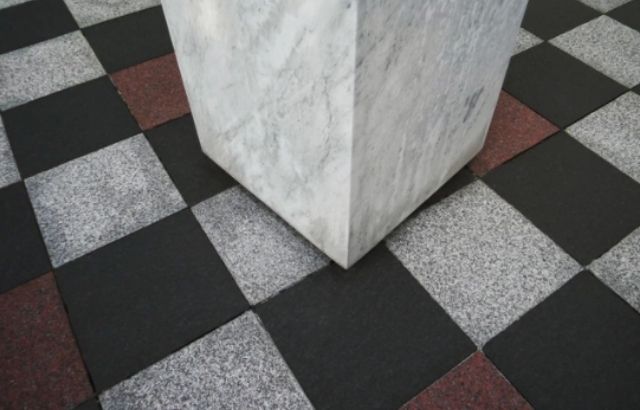
How do you Get Floor Tiles from Ceramic?
Different types of artifacts are created with ceramics processing, including floor tiles, also called tiles or terracotta tiles. They are manufactured in various formats, which differ in size, shape, and type of surface; the latter can be glazed or unglazed.
The glazed tiles are covered with glassy material, treated to obtain many colors and glossy or satin effects. The glass layer has not only an aesthetic function: in addition to making the surfaces brighter, it protects them, makes them hard, waterproof, and gives them an adequate level of thermal insulation.
The unglazed tiles do not have a glass coating. They absorb dirt more and enhance appearance; they are finished with polishing, satin finishing or lapping, or surface finishing with diamond wheels and brushes to improve their aesthetic characteristics.
Learn More: How To Clean Textured Ceramic Tile Floors
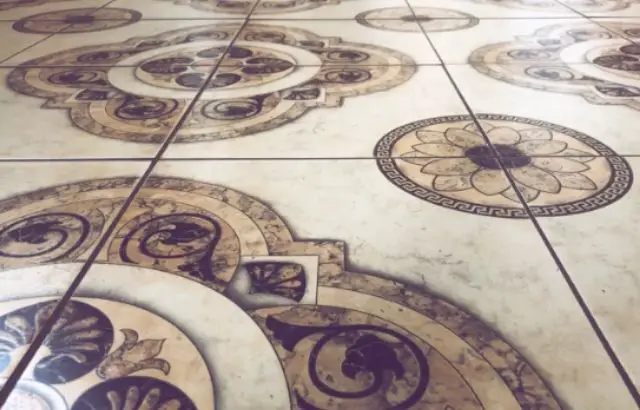
Understanding the Concept of Adhesive Tiles
Adhesive tiles are materials used in construction, mainly composed of plastic. Their appearance varies depending on the aesthetic needs; in fact, it is possible to have tiles with a wood effect, those simulating ceramic (which are worked with extracts of the same material), and those that reproduce green lawns, coloured walls, or any other type of surface reproducible with plastic or Pvc. In particular, the plastic is processed together with specific minerals, which give the extreme material versatility.
Adhesive tiles are alternative allies of modern construction: colored and decorated according to the most varied tastes and styles. What are the effect and defects of using adhesive tiles? How much do they cost? How does the installation take place? The adhesive tiles combine simplicity and economy put at the service of do-it-yourself.
You often choose to change the style, your home’s look, starting from the walls or floors. Equally, however, this renewal process can also involve a vast effort at an economic level since disassembling the cladding tiles can be too long, demanding, and arduous.
Sometimes, maintenance or renovation operations require some decorative bands, but the work will still need a lot of effort due to the inevitable use of masonry interventions.
However, new types of tiles are available on the market to facilitate all the flooring assembly and disassembly procedures. These tiles have an adhesive layer that allows them to be easily glued to the ground, and it is from this particular and innovative structure that they take their name; in fact, they are adhesive tiles. The latter may already have a self-adhesive part on the back supplied, or they can be installed with the aid of silicone glue.
Adhesive tiles are increasingly used in the construction sector, thanks to their ease of installation and varied choice. It allows you to create a sophisticated and elegant environment, whatever the style and genre: adhesive tiles suitable for covering floors, walls, large or small surfaces.
How to Choose the Thickness of a Tiles
There are a few mostly logical rules. First, the thickness depends on the size of the tile. Second, the thickness of a floor tile is always greater than that of a wall tile.
Each manufacturer has its standards. Therefore, it is up to you to sort it out to choose the thickness that suits you, mainly since the thickness also influences the tiles’ price. Nevertheless, here is how you can think about the matter.
It is advisable to take tiles with a minimum thickness of 6 mm. It will be easier to handle the parts with this thickness. Indeed, in some places, you will need to make cuts. A thin tile is more difficult to handle than a thick tile. For larger tiles, opt for a greater thickness. With a 15x15cm tile, the consistency should be at least 8mm. For large tiles, 60 × 60 and beyond, the thickness must be greater than 10 mm.
- 10 × 10 tiles, thickness ≥6mm,
- 15 × 15 tiles, thickness ≥8mm,
- 30 × 30 tiles, thickness ≥10mm,
- 60 × 60 tiles, thickness ≥12mm.
Floor and Wall Tile Thicknesses
Intended to support a greater weight, the tiles to be laid on the ground must be thicker, so that it does not crack when it is subjected to substantial value. Everything will, therefore, depend on its request. For example, for a room intended for storage, the tile should be as thick as possible, up to 15 mm if necessary. A wall tile is less used. You can apply a thinner wall tile, but always respecting the minimums previously planned.
The thickness of the tile adhesive must also be taken into account when calculating the height loss.This will increase depending on the load. A large tile will be heavier and therefore require a greater thickness of glue. However, the glue must not exceed 10 mm, otherwise the tiles may come off.The thickness of the glue will also depend on the substrate. A perfectly leveled surface will only need a thin coat, just like bonding to existing tiles.
This consideration is all the more important when the tiling is going to be applied under a door. You must consider the space available between the bottom of the door and the height of the tiles.For the door to open correctly without risk of friction, a space of 1 to 1.5 mm must be allowed. So you calculate the tile thickness plus glue based on these data.
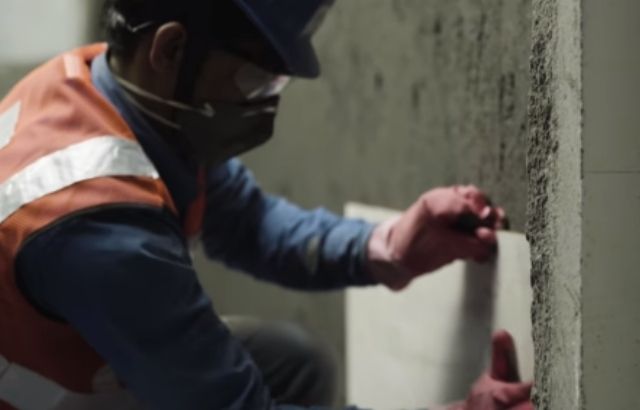
Additional tips for Laying Tiles
Before laying the tiles, you must first prepare the surface.
- Leveling,
- Cleaning,
- Drying.
It is important to use braces when laying the tiles.They allow you to keep the same spacing between all the tiles. And if you want to achieve the same spacing and level throughout the room, use self-leveling braces that press and hold the tiles, so the height is always respected.
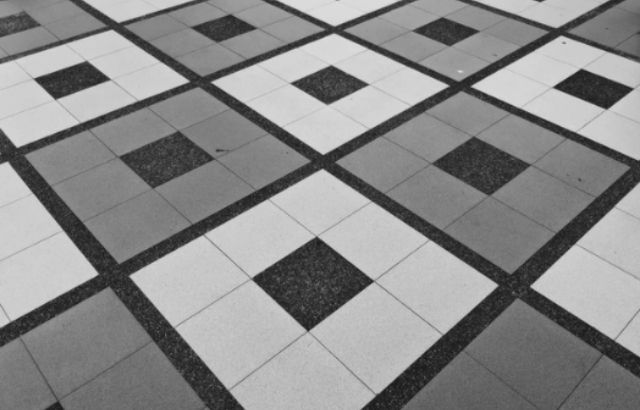
Materials and Technical Characteristics Used In Tile
By using new technologies and refined processing techniques, it is possible to create adhesive tiles with different composite materials, from vinyl to minerals, synthetic chemicals, increase their resistance characteristics, and simulate traditional coatings.
The composition of the adhesive tiles varies according to the manufacturer: on the market, it is possible to find tiles with a self-adhesive solution or those that need silicone glue to be applied and, in both cases, it is necessary to proceed with the application of the tiles on a smooth and polished surface. Laying on irregular surfaces is possible with the use of special fillers. Furthermore, the adhesive grip will be substantial in any case.
Moreover, the materials used for the tiles’ composition are specially treated and are marketed with an insulating finish.
Learn More: How To Remove Porcelain Floor Tiles Without Breaking Them
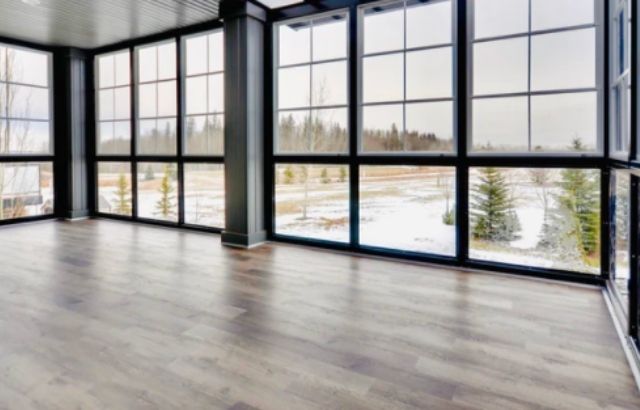
The Formats
The adhesive tiles are commercially available in large slabs that must be cut following the package’s instructions, using sharp scissors or cutters.
The adhesive tiles have regular dimensions to be easily applied and respond to different types of needs; for this reason, they come in standard solutions, namely:
- small tiles 40.6 x 40.6 cm;
- medium tiles 30.5 x 60.9 cm;
- large tiles 60.9 x 60.9 cm;
Tiles with customised solutions
The dimensions of the thickness can also change: from 2 mm (usually used for the coating of internal floors); in this case. It is not necessary to change the height of the doors) to a maximum of 9 mm (used for the coating of outdoor environments since it is characterized by more excellent resistance).
In which environment is it possible to use the adhesive tile?
Thanks to their ease of installation using traditional techniques, adhesive tiles are suitable for covering any surface, even the smallest or challenging to reach.
The adhesive tiles are also suitable for humid environments, such as bathrooms or kitchens, since they guarantee excellent resistance to humidity and a high level of walking comfort. Their characteristic structure allows them to absorb noises, footsteps, or any falling objects.
Should you proceed with the coating of the ground edges, such as a mirror, it is possible to create a refined effect using adhesive tiles that will adapt perfectly to the required needs.
The materials used to fix the adhesive tiles can also be applied to plaster, gypsum, and concrete; therefore, it is possible to cover any surface, from the floor to the walls, as long as they are smooth and polished. Alternatively, it will be likely to resort to particular products, specifically for irregular surfaces.
Adhesive tiles can also be used in environments particularly subject to wear and tear that requires continuous maintenance: renovating with adhesive tiles is much cheaper.
How are the Adhesive Tiles Applied?
The adhesive tiles are applied on the ground in a few simple steps, making the procedure accessible to everyone, even those who are less experienced: the DIY techniques can guarantee optimal work, even if not possessed specific skills.
What Materials and Tools do you need?
To proceed with the installation of the adhesive tiles, you will need the following tools:
Thinset Mortar (Use white mosaic mortar with light colors and gray mosaic mortar with dark colors.) Do not use ceramic tile adhesive.
- Standoffs (1/16 “or 1.6 mm)
- 1/2 “(13 mm) Notched Trowel
- Sponge
- 5-gallon bucket of water
- Wet Slab Saw with Diamond Blade
- Caliche / Grout Unsanded Regular (NO Epoxy)
- Fleet (molded rubber for grout) or Grout Bag
- Cement / Concrete Floor Penetrating Sealer – One of the best is Dry-Treat STAIN-PROOF.
- 17 “(43 cm) Diameter Floor Polisher
- Polisher Brush (Sand screen # 220 / black pad – optional), green and white pads
- adhesive tiles;
- 1 professional cutter;
- the silicone glue if the tiles are not adhesive;
- a floor roller;
- a team;
- A plastic spatula.
- a degreasing cleaner;
- sufficient self-adhesive tiles;
- a cutter ;
- a pencil ;
- a meter to measure;
- a mason’s rule;
- A spirit level (for a wall tile).
To determine the number of tiles to buy, it is necessary to multiply the surface’s width to be covered by its length to obtain the square meters of slabs or squares of tiles required. It is advisable to buy 10% more for any sizing (tile cuts, rounded corners) of the tiles with the surface’s shape to be covered.
How to Proceed?
The laying of the tiles, therefore, is carried out following concrete steps, which are summarized in the following points:
- Ensure the surface is smooth well-polished, and then proceed with thorough cleaning and degreasing;
- Place the first tile starting from the center of the surface;
- Place the other tiles, forming a vertical and a horizontal row and with a square check that the meeting point of the two rows forms a right angle, after which it is advisable to trace the contour lines of the two rows of tiles with a pencil order to have a guideline;
- Remove the tiles and start the actual laying; If required, remove the protective film of the adhesive positioned on the back of the first tile; if not, proceed with the application of the adhesive; lay the first tile inside the square drawn previously with the pencil, according to the layout of the test tiles; when it is correctly positioned, exert a slight pressure starting from the centre and continuing towards the edges;
- Proceed with the installation of the other tiles, taking care to respect the same sizing of the joint lines; in this way, continue up to the perimeter of the room; if it is necessary to cut a tile to follow the trend of the walls (angles or various obstacles), it will be sufficient to engrave with a kitchen knife and bend until the adhesive tile breaks; Pass a roller over the entire surface to avoid the formation of air bubbles;
- Once the installation is finished, apply the grout between one tile and another, filling the spaces created, this will allow giving the flooring a more truthful nature; Remove excess grout with a damp cloth.
Learn More: How To Remove Slate Floor Tiles
Criteria for Choosing an Adhesive Tile
Different criteria should be taken into account when buying tile stickers.
Water-resistance
Some adhesive tiles are not water-resistant. They are perfect for the living room or the bedroom. On the other hand, other models are specially designed for installation in spaces frequently exposed to humidity and have received a waterproofing treatment. This primary aim is the bathroom and the kitchen.
Color and pattern self
Adhesive tiles can display a solid or patterned color (imitation cement tiles, patchwork, or mosaics, for example). It is possible to choose between the matt, satin, or shiny appearance on the finish side.
Shapes and dimensions
It is possible to choose between a square tile sticker and a built-in model. The thickness is 1 or 2 mm. The sides measure between 20 and 50 cm. It is necessary to provide about 16 self-adhesive tiles to cover an area of 1 m 2.
The support
Adhesive tiles are generally designed to cover coatings such as slate, earthenware, or terracotta. Some models are specially adapted to cover a surface made of metal, wood, or covered with wallpaper.
How to Lay Tiles or Other Types of Ceramics
Here are the fundamental steps you must follow to achieve a successful job:
Check that the surface is flat
The first thing we have to do is check that the floor or wall on which the ceramic is going to be placed is flat enough. , we must render assistance ourselves with a rule, if possible, two meters. This surface must also be clean and prepared so that the ceramic adhesive or glue mortar can grip well.
Mix the adhesive
Subsequently, the adhesive must be mixed. To achieve a homogeneous dough with the ideal texture, the powdered product should be added to a water container using an electric mixer.
Apply the thin-set mortar on the wall or floor
This is to apply the mortar or glue mortar on the wall or floor. For this, we will need a comb or notched trowel.
The correct way to do this is to spread the adhesive material with the smooth edge and comb it with the serrated edge to achieve optimal fixation and the best adhesive performance.
To optimize the work, it is essential to follow these two recommendations: work in small areas to prevent the surface layer from drying and adapt the size of the bead created by the comb to the size of the tile so that the larger the measurements of the larger tile must be the tooth.
Place the ceramic
Within the step by step of how to place tiles or any other type of ceramic, it is imperative to achieve good results, using spacers to align and separation between pieces and homogeneous pieces.
It is also advisable to use a rubber mallet to seat the pieces correctly.
Fill the joints
Fill in the spaces between the pieces, using a rubber trowel, with a specific mortar for joints that we will have previously mixed. For an excellent joint finish, we can use a damp sponge to remove the excess battery. At this point, it will be necessary to change the water in our bucket or bucket as many times as required.
Final cleaning
Once the joint has dried, we can carry out the final cleaning. We can use a cleaning product with the joint dry, mainly neutral, to obtain the final finish.
Mostly Asked FAQ questions and Answers
What are thinset?
Thinset or mortar (or thin-set mortar, thin-set cement, dry-set mortar, or dry bond mortar) is an adhesive made of cement, fine sand, and a water-retaining agent like an alkyl derivative of cellulose. Majorly thin-sets have latex and polymer additives in them designed to increase the bonding strength.
What are they used for?
More so, Thinset is used to install tile over cement, cement/fiberboard, and anti-fracture/waterproofing membranes. It enables tile or stone to stick or bond to the backer board. As tile sizes get more extensive and more prolonged, adequate thin-set mortar coverage becomes increasingly critical.
What happens if a thin-set is too thick?
Thin-set should be adequately mixed to the consistency of peanut butter. While specific instructions vary by the manufacturer, the basics are the same.
What is the maximum thickness of the thinset?
Dry thin-set and water must both be mixed in a bucket one after the other. A bag of thin-set should never be prepared at the same time. Add half of your water to the bucket, then add some thin-set and mix. You are keeping adding a thin-set until you are satisfied with the consistency. Ensure the material slake and then remix, and you are ready to go.
Can you use too much thin-set?
In relevance to cement ingredients, thinset should be prepared in small batches as needed. Hence, it also should never be washed down a drain, as it will harden pipes.
Article Summary
We believe this article has helped you a lot with floor tiles’ thickness, how thick are ceramic floor tiles, the thickness of floor tiles and adhesive, tile thickness with thin-set, and lots more discussed in the articles.
The thickness of a tile is essential since it is on it that depends, among other things, the resistance and the life of the tiles. In order not to go wrong,” Good tiles need to have quality adhesive cement because, otherwise, the floor will split or rise.


